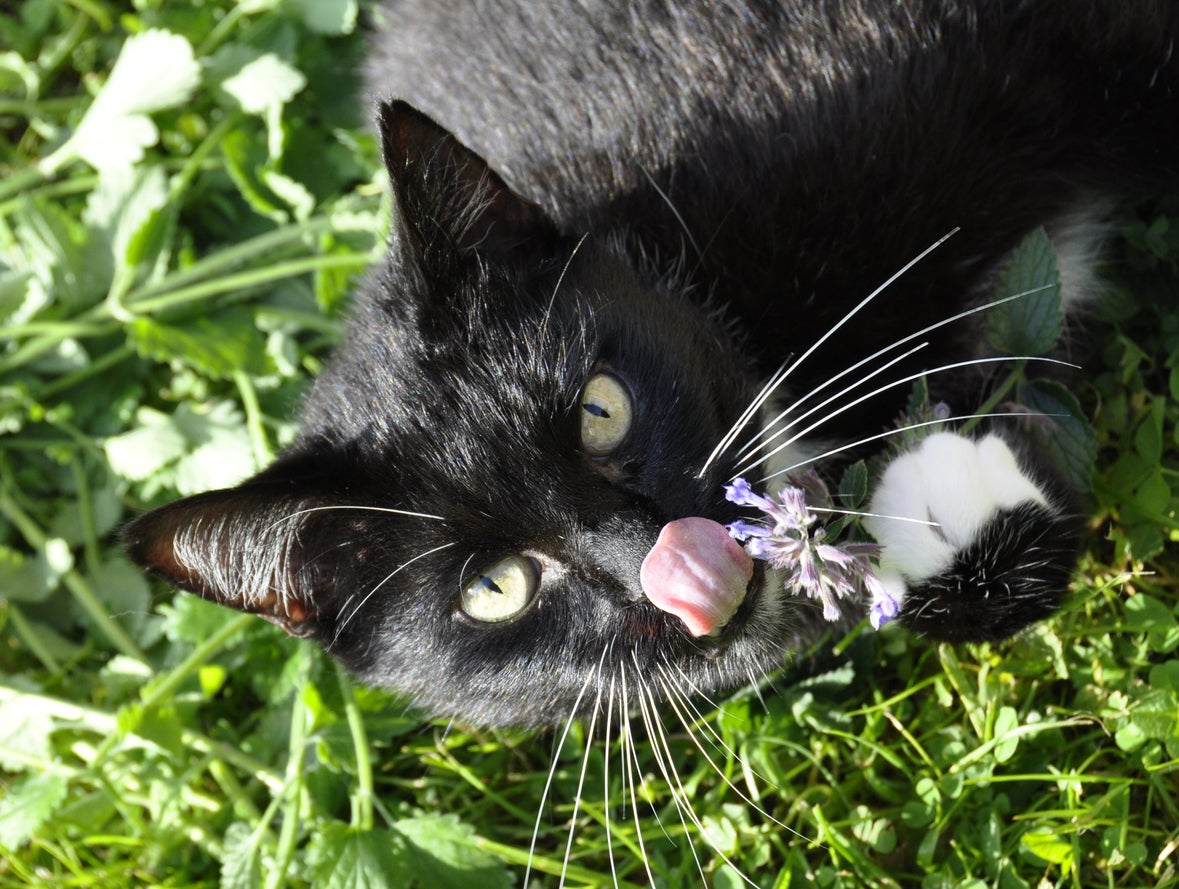Planting Catnip For Cats: How To Grow Catnip For Cat Use

If you have cats, then you are more than likely to have given them catnip or have toys for them that contain catnip. As much as your cat appreciates this, he/she would love you even more if you provided them with fresh catnip. You can grow catnip plants for your feline friends either inside or outside, and don’t worry; growing catnip for your cat is easy.
About Planting Catnip for Cats
It wasn’t until relatively recently that folks began growing catnip, Nepeta cataria, strictly for their cats. It used to be more commonly used to treat medicinal ailments, or grown for tea or even as a culinary herb. Someone, somewhere, soon discovered its psychotropic effects on cats and, today, most people grow catnip for cat uses.
There probably isn’t a cat lover out there who hasn’t tried catnip out on their fur baby. For the majority, the results are delightful with only one-third of the pets having no reaction at all. But for the other two-thirds, it’s time to learn how to grow catnip plants for your feline pet’s enjoyment.
Catnip contains essential oils that act as stimulants to cats. Specifically, the terpenoid nepetalactone is produced in the oil glands on the underside of the foliage and on the stems. This oil has also been used as an insect repellent, although it isn’t effective when applied on the skin. The oil tends to dry out over time, which may be why Fluffy started to ignore some of those catnip toys.
How to Grow Catnip for Cat Use
Catnip is a member of the mint family and is hardy in USDA zone 3-9. It has become widely naturalized throughout temperate areas of the world. It can be propagated by leaf tip cuttings, division, or seeds. Catnip can be grown in the garden proper or in containers, either inside or outside.
Like mint, catnip can take over a garden area, so growing catnip in containers is a great option, plus it provides a year-round source of the herb to your feline friends.
Outside, catnip is not too picky about its light requirements, but container-grown catnip needs at least 5 hours of bright sunlight inside. Again, it is not particular about soil but prefers a rich, loamy soil that is well-draining.
Sign up for the Gardening Know How newsletter today and receive a free copy of our e-book "How to Grow Delicious Tomatoes".
Keep new seedlings moist but not sodden. When the plants have established, they are quite drought-tolerant. Pinch off blooms to encourage a second bloom or continually pinch to create a bushier plant.
How to Dry Catnip Plants
Now that you are growing your own catnip, it’s time to learn how to dry the herb for your cats. You may harvest an entire plant or just cut some stems. These can be hung upside down in a warm, dark, well-ventilated area until they are dry.
Then the leaves and flowers can be stripped from the stem and stored in a sealed container or sewn into handmade cat toys.

Amy Grant has been gardening for 30 years and writing for 15. A professional chef and caterer, Amy's area of expertise is culinary gardening.
